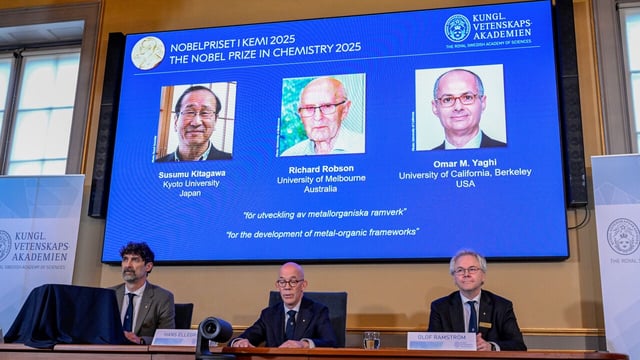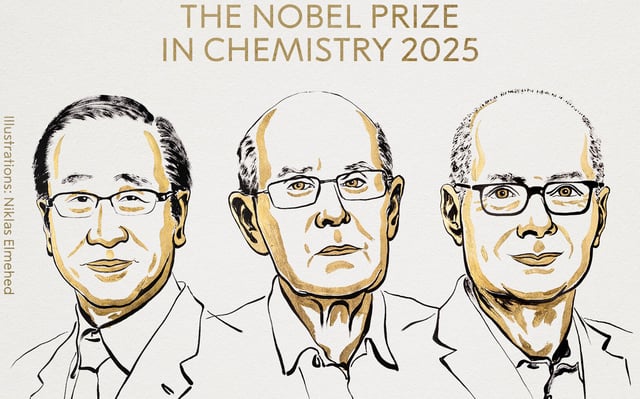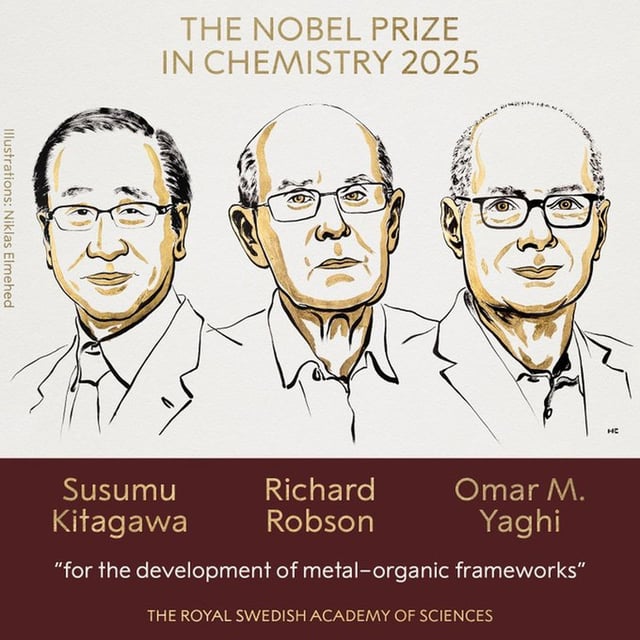Overview
- MOFs are ultraporous crystalline networks whose internal surface area can rival a football field in just a few grams, enabling selective capture, storage and separation of molecules.
- The Royal Swedish Academy of Sciences named the trio as the 2025 laureates, who will share 11 million Swedish kronor.
- Richard Robson proposed porous metal–organic crystal architectures in the 1980s, Susumu Kitagawa demonstrated their stability and flexibility, and Omar M. Yaghi developed robust, tunable versions such as MOF-5.
- Demonstrated uses include CO2 capture at industrial sites, purification of water contaminated with PFAS and pharmaceutical residues, hydrogen storage, ethylene control for fruit ripening, and handling toxic gases in semiconductor manufacturing.
- Yaghi’s group also showed MOF-based devices that harvest water from desert air by absorbing vapor overnight and releasing liquid with morning sunlight.


